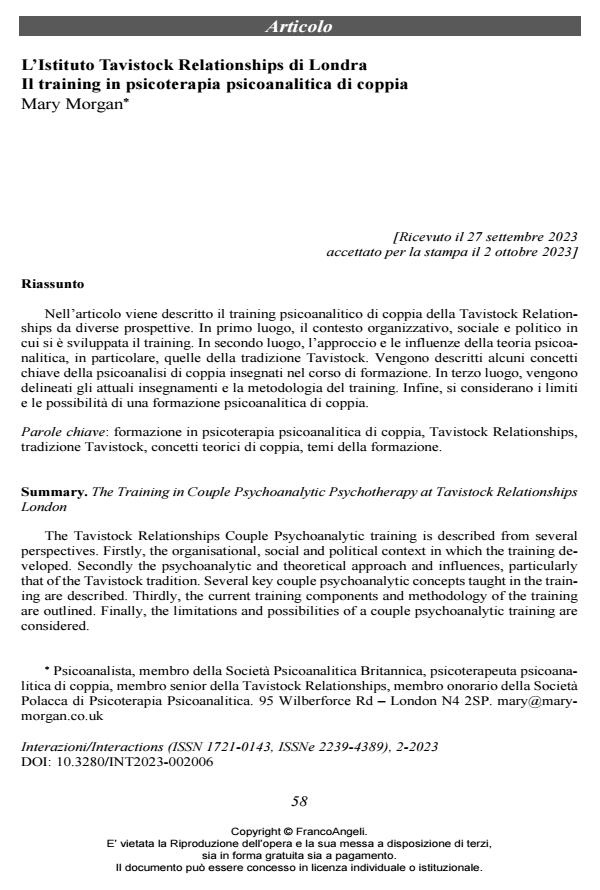L’Istituto Tavistock Relationships di Londra Il training in psicoterapia psicoanalitica di coppia
Titolo Rivista INTERAZIONI
Autori/Curatori Mary Morgan
Anno di pubblicazione 2023 Fascicolo 2023/2
Lingua Italiano Numero pagine 13 P. 58-70 Dimensione file 189 KB
DOI 10.3280/INT2023-002006
Il DOI è il codice a barre della proprietà intellettuale: per saperne di più
clicca qui
Qui sotto puoi vedere in anteprima la prima pagina di questo articolo.
Se questo articolo ti interessa, lo puoi acquistare (e scaricare in formato pdf) seguendo le facili indicazioni per acquistare il download credit. Acquista Download Credits per scaricare questo Articolo in formato PDF

FrancoAngeli è membro della Publishers International Linking Association, Inc (PILA)associazione indipendente e non profit per facilitare (attraverso i servizi tecnologici implementati da CrossRef.org) l’accesso degli studiosi ai contenuti digitali nelle pubblicazioni professionali e scientifiche
Nell’articolo viene descritto il training psicoanalitico di coppia della Tavistock Rela-tionships da diverse prospettive. In primo luogo, il contesto organizzativo, sociale e poli-tico in cui si è sviluppata il training. In secondo luogo, l’approccio e le influenze della teoria psicoanalitica, in particolare, quelle della tradizione Tavistock. Vengono descritti alcuni concetti chiave della psicoanalisi di coppia insegnati nel corso di formazione. In terzo luogo, vengono delineati gli attuali insegnamenti e la metodologia del training. Infi-ne, si considerano i limiti e le possibilità di una formazione psicoanalitica di coppia.
Parole chiave:formazione in psicoterapia psicoanalitica di coppia, Tavistock Relation-ships, tradizione Tavistock, concetti teorici di coppia, temi della formazione.
Mary Morgan, L’Istituto Tavistock Relationships di Londra Il training in psicoterapia psicoanalitica di coppia in "INTERAZIONI" 2/2023, pp 58-70, DOI: 10.3280/INT2023-002006